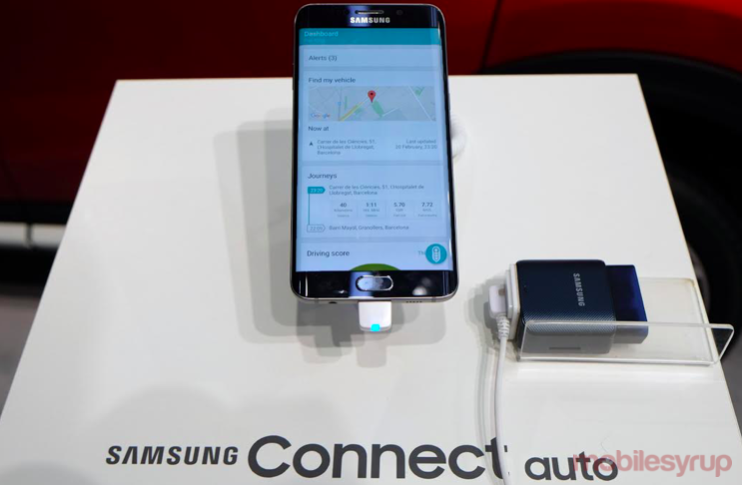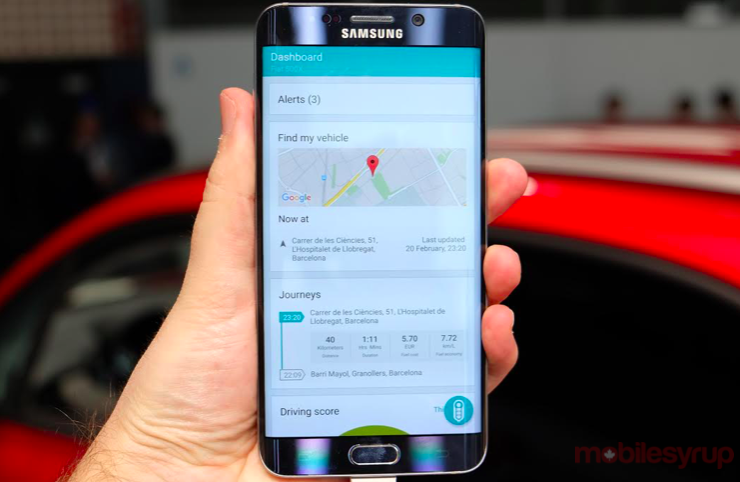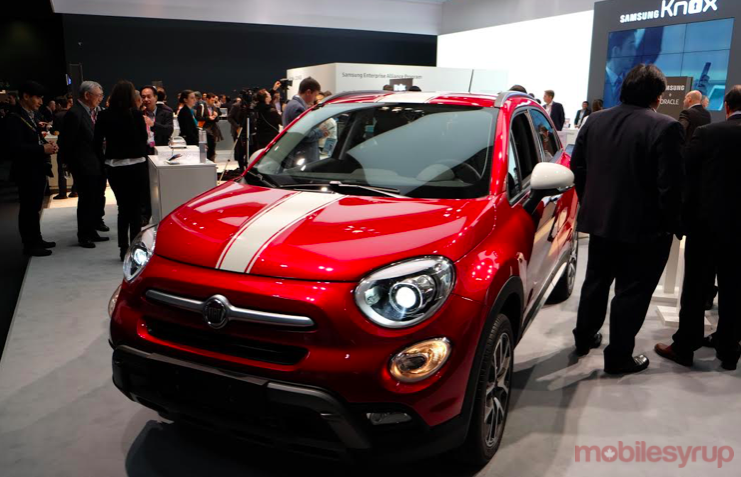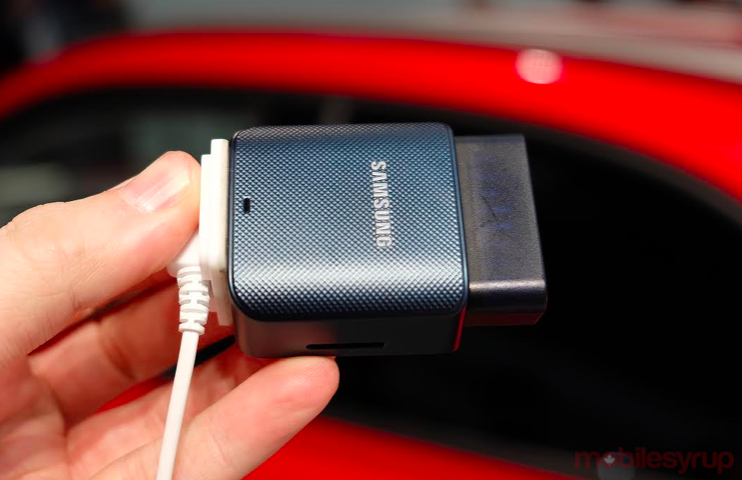
Samsung has made headlines at Mobile World Congress for its new shiny phones and VR plans, but part of its drive (no pun intended) toward the Internet of Things will include its Auto Connect device and service.
The hardware piece is a module that plugs into a vehicle’s OBD-II port, usually found under the steering wheel, which can then interface with the car’s onboard computer to track driving habits, read diagnostic information and offer telematics services.
A dedicated app can pair with the device over Wi-Fi or Bluetooth to read the information and present all the tracking statistics. In addition, it is location-based, so it would know where you parked, how much you’ve driven, where you went, how well you’re driving and the fuel efficiency. Samsung intends to market this as a way to save money on auto insurance because of the data it would collect.
Android 5.0 Lollipop or higher looks to be the starting point for using the app, and somewhat surprisingly, there will be iOS support as well, though no word on which version of the OS will be required.

The diagnostics and telematics are supposed to work in tandem to help in difficult circumstances, like being stranded on the road. For example, if the car breaks down, and the driver is unclear exactly they are, a phone call to a specific number will dispatch nearby roadside assistance or emergency services who will know the Auto Connect device, plus location and engine status of the vehicle before arriving to help fix the issue, tow the car or send an ambulance.
“Family features” — code for geo-restricted settings is also included as an option for helicopter parents who might want that for new teen drivers. More than one phone can be associated with the module, but only one administrator can apply a geo-fence and receive notifications anytime the car ventures outside that particular zone. It appears that different zones can be set up, not only for different users, but also for different days of the week, making it possible to relax restrictions on the weekend, for instance.

The module itself has LTE connectivity courtesy of an embedded SIM, which means it will require its own data plan. It can also act as a Wi-Fi hotspot for mobile devices to connect to on-the-go.
Running on Tizen, it would be possible for developers to create an app that could be downloaded directly to work specifically on the device. Samsung’s Knox mobile security framework is built-in, ostensibly to ward off cyberattacks that could mess with the vehicle’s computer in some way.
Another reason for beefing up security is the “key sharing” features that is primarily aimed at rental and fleet operators, but could include individuals, too. With a partner to facilitate, the Connect Auto device could enable drivers to book, access, start and return a vehicle through an app. This would make the keys virtual, transferred over the air to an authorized smartphone. Nothing concrete has been announced on that as yet, but it is confirmed to be a possibility.
With a summer launch expected in the U.S., the device will work exclusively with AT&T to start, where subscribers will be able to use it on shared data plans. This does lock out subscribers from other carriers from sharing the data connection with the device, though any device, regardless of carrier, can connect to its hotspot.
Nothing has been confirmed yet on Canadian availability though it’s fair to say that it will have to be a similar scenario with an exclusive partnership. Telus already has such an arrangement with Mojio, so Rogers or Bell may be more likely bets on rolling this out sometime in 2016.
Pricing hasn’t been announced, nor what the subscription fee might be to access all the services. It’s not even clear if a freemium model will be used to incentivize users to sign up and go for a monthly plan.

Newer vehicles with SIM cards already embedded probably won’t need Connect Auto because they would already be outfitted with their own concierge services, like GM’s OnStar, for example. But with all vehicles from 1996-later equipped with OBD-II ports, the backward compatibility is very high.
While there are a number of other OBD-II devices and apps that perform similar tasks, Samsung is betting that its ability to entice partners, developers and secure the platform will attract a strong subset of users. We will find out soon enough.
MobileSyrup may earn a commission from purchases made via our links, which helps fund the journalism we provide free on our website. These links do not influence our editorial content. Support us here.


